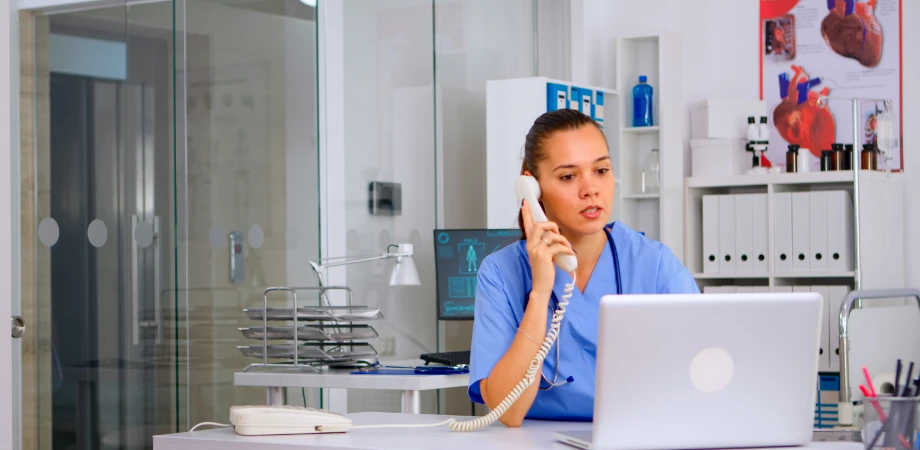Doctors know that medicine doesn’t follow a 9–5 schedule. Symptoms flare at night, parents worry on weekends, and patients often seek reassurance during hours when clinical teams are away from the office. Yet the reality is that after-hours communication poses some of the greatest risks—and greatest frustrations—for practices today.
Patients expect guidance. Physicians need rest and boundaries. Staff can’t be available around the clock. And somewhere in the middle, communication gaps form—gaps that can lead to delayed care, confusion, dissatisfaction, and sometimes legal exposure.
Below is a detailed look at why after-hours communication is so challenging—and how medical answering services help practices manage these demands safely and effectively.
Patients Expect Immediate Answers—Even When It’s Not an Emergency
Most after-hours calls aren’t true emergencies. They tend to fall into categories like:
- worsening but non-urgent symptoms,
- side effects,
- fevers,
- medication questions,
- post-procedure concerns,
- or simple uncertainty about what to do next.
Patients aren’t trying to burden the doctor—they’re trying to do the right thing. But when their only option is voicemail or delayed callbacks, worry escalates. That anxiety shapes how they view their care.
In many malpractice disputes, the patient’s emotional experience—feeling ignored, confused, or abandoned—matters just as much as the clinical outcome.
After-Hours Communication Failures Are a Top Source of Complaints
Physicians rarely see it, but after-hours issues often drive negative patient reviews, portal messages, and complaints:
- “No one answered the phone.”
- “I left a message and didn’t hear back until morning.”
- “I wasn’t sure if I should go to the ER.”
These moments don’t just frustrate patients—they create exposure for physicians.
When a patient delays care because they couldn’t reach anyone, the timeline becomes a focal point for any future claim. Even if the doctor would have given the same advice, the absence of communication becomes the problem.
Burnout and Boundary Concerns Are Real
Physicians today are expected to:
- handle in-office care,
- review labs,
- monitor portal messages,
- manage inboxes,
- attend meetings,
- and still be reachable after hours.
This is not sustainable.
Doctors need rest, predictable downtime, and separation between work and home life. But without a structured system to screen and route after-hours calls, physicians are forced into one of two uncomfortable extremes:
- Being too available, which accelerates burnout
- Not being available, which increases patient risk
Neither option is ideal.
The Risk Isn’t Just Missed Calls—It’s Missed Documentation
After-hours communication often happens informally: a voicemail, a callback, a note scribbled for later. These unstructured moments create legal vulnerabilities.
If a patient claims they called with a serious concern, the physician’s defense is weak unless the interaction was:
- logged,
- timestamped,
- routed, and
- documented.
Documentation protects both parties. Without it, the narrative becomes guesswork.
Staffing Limitations Make After-Hours Coverage Nearly Impossible
A small or mid-sized practice can’t staff phones around the clock. Even large groups struggle with:
- unpredictable call volume,
- staffing shortages,
- complex triage needs,
- and varying patient expectations.
This leads to bottlenecks—particularly on evenings, weekends, and holidays.
And yet, patients expect the practice to remain accessible in some form.
Answering Services Provide Structure Where Practices Need It Most
Medical answering services exist to fill a very specific gap: the period when practices are closed but patient needs continue.
A well-trained medical answering service:
- answers every call promptly,
- documents the interaction,
- captures symptoms or concerns accurately,
- routes urgent messages to the physician,
- holds non-urgent concerns for morning follow-up,
- prevents unnecessary ER visits, and
- provides patients with clarity and reassurance.
This isn’t outsourcing clinical judgment—only the first layer of communication. Physicians remain in control of care decisions, but they no longer carry the burden of every after-hours interaction.
Why This Reduces Risk
Answering services reduce exposure by:
- preventing missed messages,
- ensuring no call is lost or ignored,
- creating documentation for every interaction,
- identifying urgent symptoms sooner,
- helping patients make informed decisions, and
- reducing dissatisfaction and frustration.
Many malpractice insurers emphasize communication processes as a core risk-mitigation strategy for physicians. Reliable after-hours call handling is part of that safety net.
Patients Feel More Supported Without Overloading the Physician
When a trained medical agent answers the phone at 10 p.m. with a calm, professional tone, the patient relaxes. Someone acknowledged their concern. Someone is listening. Someone will help determine the next step.
This alone can prevent conflict, confusion, and unnecessary escalation.
Final Thoughts
After-hours communication challenges are part of modern medicine, but they don’t need to be a liability or a source of burnout. With structured after-hours support, doctors can protect their time, safeguard their patients, and reduce exposure—without sacrificing quality of care.
Reliable communication may start with a simple phone call, but its impact reaches far deeper.

